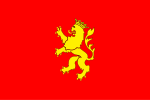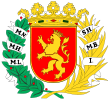Zaragoza
| Zaragoza | |||||
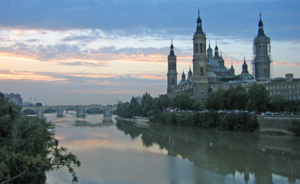 |
|||||
|
|||||
| Location | |||||
|---|---|---|---|---|---|
| Coordinates : Time zone : CET (GMT +1) - summer : CEST (GMT +2) |
|||||
| General information | |||||
| Native name | Zaragoza (Spanish) | ||||
| Spanish name | Zaragoza | ||||
| Founded | 24 BC | ||||
| Postal code | 50001 - 50018 | ||||
| Website | http://www.zaragoza.es/ | ||||
| Administration | |||||
| Country | Spain | ||||
| Autonomous Community | Aragon | ||||
| Province | Zaragoza | ||||
| Comarca | Zaragoza | ||||
| Administrative Divisions | 13 | ||||
| Mayor | Juan Alberto Belloch (PSOE) | ||||
| Geography | |||||
| Land Area | 1062,64 km² | ||||
| Altitude | 199 m AMSL | ||||
| Population | |||||
| Population | 682,283 (2008) | ||||
| - rank in Spain: | 5 | ||||
| Density | 601.14 hab./km² (PD/sqmi) () | ||||
Zaragoza, also called Saragossa in English, is the capital city of the Zaragoza province and of the autonomous community and former Kingdom of Aragon, Spain. It is situated on the river Ebro and its tributaries, the Huerva and Gállego, near the centre of the region, in a valley with a variety of landscapes, ranging from desert (Los Monegros) to thick forest, meadows and mountains.
The population of the city of Zaragoza in 2008 was 682.283,[1] ranking fifth in Spain. The population of the metropolitan area was estimated in 2006 at 783,763 inhabitants. The municipality is home to more than 50 percent of the Aragonese population. The city lies at an altitude of 199 metres above sea level, and constitutes a crossroads between Madrid, Barcelona, Valencia, Bilbao and Toulouse (France) — all of which are located about 300 kilometres (200 miles) from Zaragoza
Zaragoza hosted the Expo Zaragoza 2008 in the summer of 2008, a World's Fair on water and sustainable development.
Contents |
History
Early history
The city used to have the name Salduba or Saldyva, a Punic name of a Carthaginian military post built on the remains of a Celtiberian village, when the Romans invaded the area it fell under colonia of Caesaraugusta, founded under Augustus in Hispania Citerior.
Arab Saraqusta
In 714 The Arabs took control of the city, renaming it Saraqusta (سرقسطة). It later became part of the Emirate of Cordoba, It grew to become the biggest Arab controlled city of Northern Spain. In 777 Charlemagne attempted to take the city but he was forced to withdraw when faced by the organized defense of the city and the Basque attacks in the rear (Chanson de Roland).
Taifa of Zaragoza

From 1018 to 1118 Zaragoza was one of the taifa kingdoms, independent Muslim states which emerged in the eleventh century following the destruction of the Cordoban Caliphate. During the first three decades of this period, 1018–1038, the city was ruled by the Banu Tujib. In 1038 they were replaced by the Banu Hud, who had to deal with a complicated alliance with El Cid of Valencia and his Castilian Masters against the Almoravids who managed to bring the Taifas Emirates under their control. After the death of El Cid his kingdom was overrun by Almoravids and by 1100 Almoravids had managed to cross the Ebro into Barbastro, which brought Aragon into direct contact with Almoravids, The Banu Hud stubbornly resisted Almoravids and ruled until they were eventually defeated by the Almoravids in May 1110. The last sultan of the Banu Hud, Abd-al-Malik Imad ad-Dawla, the last king of Zaragoza, forced to abandon his capital, allied himself with the Christian Aragonese under Alfonso I el Batallador and from the time the Muslims of Zaragoza became military regulars within the Aragonese forces.
Aragonese era

In 1118 the Aragonese conquered the city from the Almoravids and made it the capital of the Kingdom of Aragon. After Alfonso's death without heirs in 1134, Zaragoza was swiftly occupied by Alfonso VII of León-Castile, who vacated it in 1137 only on condition it be held by Ramon Berenguer IV of Barcelona as a fief of Castile.
Zaragoza was the scene of two controversial martyrdoms related with the Spanish Inquisition: those of Saint Dominguito del Val, a choirboy in the basilica, and Pedro de Arbués, head official of the inquisition. While the reality of the existence of Saint Dominguito del Val is questioned, his "murder" at the hands of "jealous Jews" was used as an excuse to murder or convert the Jewish population of Zaragoza.
St. Vincent was concerned that the converts were not being properly educated as Christians, but such an explicit focus on the religiosity of the converts was as rare in his sermons as it was elsewhere during this period. Much more often, he stressed not the integration of the convert but the segregation of the Jew, and this in explicitly sexual terms.
Of course, St. Vincent was very much concerned with sexual offenses of any kind, and he was convinced that sexual appetites were becoming increasingly deviant in his day. Nowadays, he complained, Christian men "want to taste everything: Muslims and Jews, animals, men with men; there is no limit."
He was especially concerned about what he perceived to be an explosion of sex between Christians and Jews.
In 1415, he told a Zaragozan audience that "many Christian men believe their wife's children to be their own, when they are actually by Muslim and Jewish [fathers]." If the citizens did not put a stop to such interfaith adultery, he warned, God would do so through plague. His sermon provoked a sexual panic.
Christian patrols searched the streets, on the lookout for predatory Jews or Muslims in search of Christian women. One Muslim was seized, found with "iron tools for . . . forcing open doors in order to obtain Christian women for Muslim men". Another was arrested after witnesses claimed to have seen him fleeing a Christian woman's room by the flat rooftops one night. So many charges were brought that the responsible judicial official was accused of fomenting a riot against the Muslims and the Jews.
According to St. Vincent, the problem was one of ambiguous identities. Jews and Muslims were living among Christians, dressing like Christians, even adopting Christian names, so that "by their appearance they are taken and reputed by many to be Christians."
The solution he advocated was one of heightened marking and segregation. So powerful was his reasoning that it convinced the Pope, the kings of Castile and of Aragon, and innumerable town councils and municipal officers to attempt the most extensive efforts at segregation in the Middle Ages.
It suffered two famous sieges during the Peninsular War against Napoleonic army: a first from June to August 1808; and a second from December 1808 to February 1809 (see Agustina de Aragón, Siege of Saragossa (1809)).
Modern history

The Spanish Civil War is the event that had the deepest impact on local communities in the 20th century - by its end in 1939, towns were left poor, ruined and divided; estimates put the death toll between 500,000 and one million people. Zaragoza was bombed during this three-year war and was the site of important conflicts.
Groups fought with varying agendas but the conflict was largely between Nationalists, or Francoists, and Republican Loyalists. Nationalist groups - the eventual victors - were led by General Franco, a fascist who went on to collaborate with fellow iron-fisted rulers Hitler and Mussolini. The Republican groups were a conglomeration of left-leaning factions, ranging from anarchists to liberal capitalists. Aragón, with a militant trade-union membership throughout the region (in the prelude to the Civil War, Zaragoza workers had been on general strikes), should have been a natural stronghold of the Republicans. Poor organisation, however, meant the region's Republicans failed to capitalise on this and, but for a few pockets of ongoing rural resistance, eventually fell to the dominant Francoist groups. Franco knew the region, having set up Spain's primary military academy in Zaragoza in 1928, prior to the Civil War (it is still in use today).
The region is famous, however, as an important area in plans for the Durruti Column, perhaps the largest militia of anarchists in the war: 2000 militiamen marched toward Zaragoza from Barcelona, setting up communities outside the city because armament shortages made them unable to battle controlling Nationalists there. In Zaragoza, the remains of Italian soldiers killed in the civil war are located at the San Antonio de Padua church.
As Franco exercised his victory by executing many of his Republican enemies (up to 20,000 were killed), the first stirrings of WWII were underway. Officially neutral in the war, Spain's physical environment largely escaped unscathed - although many Spanish citizens volunteered to fight with Axis or Allied powers.
Despite a decline in the outlying rural economy, Zaragoza has continued to grow. During the second half of the 20th century, its population boomed as a number of factories opened in the region.
In 1979 the Hotel Corona de Aragón fire killed at least 80. ETA has been blamed, but officially the fire is still regarded as accidental.
Demographics
Population growth, in thousands, can be seen here: 
| 1991 | 1996 | 2001 | 2004 | 2005 | 2006 | 2008 |
|---|---|---|---|---|---|---|
| 594 394 | 601 674 | 610 976 | 638 799 | 647 373 | 660 895 | 682 283 |
- Historical Series of population: National Statistics Institute of Spain (INE)
- Dates 2006 City council of Zaragoza.
Climate
Zaragoza has a Mediterranean continental desert climate as it is surrounded by mountains. The average rainfall is a scanty 310 mm with abundant sunny days, and the rainfall centers in spring. There is drought in summer. The temperatures are high in summer reaching up to 40°C (102°F).
In winter the temperatures are low (usually 0 to 10°C) either because of the fog (about 20 days from November to January) or a cold and dry wind blowing from the NW, the Cierzo (related to other northerly winds such as the Mistral in the SE of France) on clear days.
Economy
In addition to the advantageous geographic situation, a General Motors Opel factory was opened in 1982 in Figueruelas, a small village nearby. The progressive decline of the agrarian economy turned Opel into one of the main pillars of the regional economy, along with: Balay, which manufactures household appliances; CAF (Construcciones y Auxiliar de Ferrocarriles S.A.) which builds railway engines for both the national and international markets; SAICA and Torraspapel in the stationery sector; and various more local companies, such as Pikolin and Lacasa, that are gradually making their ways into the international market.
The city's economy benefited from projects like the Expo 2008 (the oficial World's Fair, with the theme of water and sustainable development, held between 14 June and 13 September 2008), [1], Plataforma Logística de Zaragoza (PLAZA), Parque Tecnológico de Reciclado (PTR), as well as being on the route of the AVE high-speed rail route since December 2003, which consolidates the city role as a communications hub.
Zaragoza is home to a Spanish Air Force base, which was (until 1994) shared with the U.S. Air Force. [2] In English, the base was known as Zaragoza Air Base. The Spanish Air Force maintained an F/A-18 Hornet wing at the base. No American flying wings (with the exception of a few KC-135's) were permanently based there, but it served as a training base for American fighter squadrons across Europe. It is also the main headquarters for the Spanish Land Army, hosting the Academia General Militar, a number of brigades at San Gregorio, and other garrisons.
Culture

Zaragoza is linked by legend to the beginnings of Christianity in Spain. According to legend, the Virgin Mary appeared miraculously to Saint James the Great in the first century, standing on a pillar. This legend is commemorated by a famous Catholic basilica called Nuestra Señora del Pilar ("Our Lady of the Pillar").
The event, called "Las Fiestas del Pilar", is celebrated on 12 October, which is a major festival day in Zaragoza. Since it coincided in 1492 with the discovery of the Americas by Christopher Columbus, that day is also celebrated as El Día de la Hispanidad (Columbus Day, literally Hispanic Day) by Spanish-speaking people worldwide.
"El Pilar" lasts for nine days, with all kinds of acts: from the massively attended Pregon (opening speech) to the final fireworks display over the Ebro, there are bands, dances, procession of gigantes y cabezudos (carnival figures made of papier mache), concerts, exhibitions, the famous "vaquillas" bulls and the bull festival. Some of the most important features are the Ofrenda de Flores (Flower offering) to the virgin on the 12th, when an enormous cloak is made of the flowers
Education
The University of Zaragoza is headquartered in the city. As one of the oldest universities of Spain and a major research and development center, this public university awards all the highest academic degrees in dozens of fields.
Transportation
The city is connected by motorway with Madrid, Barcelona, Valencia, Bilbao and Toulouse — all of which are located about 300 kilometres (200 miles) from Zaragoza.
The Zaragoza Airport is a small commercial airport. It also is the home of the Spanish Air Force 15th Group, as well as being utilized by NASA as a contingency landing site for the Space Shuttle in the case of a Transoceanic Abort Landing (TAL).

Zaragoza is also connected to the Spanish High Speed railway (Renfe's AVE), by the Madrid-Barcelona line. Madrid is reachable in 1 hour 15 minutes, and Barcelona in approximately 1 hour 30 minutes. The central station is "Intermodal Zaragoza Delicias Station" where they operate railway lines and buses. In addition to long distance railway lines or high speed railway, Zaragoza has a network of cercanías.
The city has a network of buses which is controlled by TUZSA. (Urban Transport Company of Zaragoza). TUZSA The network consists of 28 regular lines, 4 line-up, 4 launchers, special line 1, 8 special lines on the occasion of Expo 2008 and 7 lines at night.
Sport
Zaragoza's football team, Real Zaragoza, plays in the Segunda División.. One of the most remarkable events in the team's recent history is the winning of the former UEFA Cup Winners' Cup in 1995. The team has also won the Spanish National Cup "Copa del Rey" six times: 1965, 1966, 1986, 1994, 2001 and 2004 and a Fairs Cup (1964).
Zaragoza's handball team, CAI BM Aragón, plays in the Liga ASOBAL.
Their local basketball team, CAI ZARAGOZA, is now on the ACB league. They play at the Príncipe Felipe with a capacity of 11,000 and their head coach is Curro Segura.
Zaragoza was strongly associated with Jaca in its failed bid for the 2014 Winter Olympics.
Places of interest

Near the basilica on the banks of the Ebro are located the city hall, the Lonja (old currency exchange), La Seo (literally in Aragonese language, "the cathedral") or Cathedral of San Salvador, a magnificent church built over the main mosque (partially preserved in the 11th century north wall of the Parroquieta), with romanesque apses from 12th century; inside, the imponent hallenkirche from 15-16th centuries, the baroque tower, and finally, with its famous Museum of Trapestries near the Roman ruins of forum and port city wall.
Near this area is a tapas zone called El Tubo and a nightclub district called El Casco Viejo. Other nightclub districts are La Zona, El Rollo and "el ambiente" (the scene) for gay people.
Some distance from the centre of the old city is an expansive Moorish castle or palace called the Aljafería, the most important Moorish buildings in Northern Spain and the setting for Giuseppe Verdi's opera Il Trovatore (The Troubadour). The Aragonese parliament currently sits in the building.
The churches of San Pablo, Santa María Magdalena and San Gil are built in 14th century, but towers can be old minarets of 11th century; San Miguel of 14th century; Santiago (San Ildefonso) and Fecetas monastery are baroque with mudejar ceilings of 17th century. All churches are Mudéjar monuments of that comprise the World Heritage Site
Other important sights are the stately houses and magnificent palaces in the city, mainly of 16th century: palaces of condes de Morata or Luna (Audiencia), Deán, Torrero (colegio de Arquitectos), Don Lope or Real Maestranza, condes de Sástago, condes de Argillo (today Pablo Gargallo museum), archbishop, etc.
The most important Zaragoza museums are the Museum of Fine Arts, with paintings of early Aragonese artists, 15th century, and of El Greco, Ribera and Goya, and the Camon Aznar Museum, with paintings ranging from Rubens, Rembrandt, Van Dyck, Velazquez and Goya to Renoir, Manet and Sorolla.
Since 14 June 2008, the site of Expo 2008 opened its doors to the public. The exhibition will run until 14 September this year.
Sister cities

The following cities are twinned with Zaragoza:[3]
- Pau
 France
France - Skopje,
 Macedonia
Macedonia - Biarritz
 France
France - Móstoles
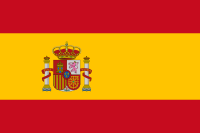 Spain
Spain - Bethlehem
 West Bank
West Bank - León
 Nicaragua
Nicaragua - La Plata
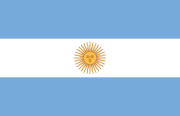 Argentina
Argentina - Zaragoza
 Guatemala
Guatemala - Tijuana
 Mexico
Mexico - Ponce
 Puerto Rico
Puerto Rico - Coimbra
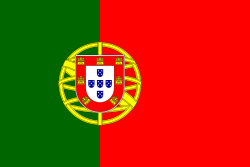 Portugal
Portugal - Zamboanga City
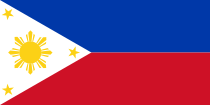 Philippines
Philippines - Kyoto
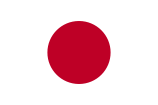 Japan
Japan
See also
- Archdiocese of Zaragoza
- Zaragoza Airport
- Expo 2008
Monuments

- La Seo Cathedral
- Basilica of Our Lady of the Pillar
- Madonna del Pilar
- Aljaferia
References
External links
- Zaragoza travel guide from Wikitravel
- Council of Zaragoza
- Zaragoza Tourism Board Official Website
- TUZSA (Urban Transport Company of Zaragoza)
- Zaragoza Airport
- Zaragoza is at coordinates
